Serengeti National Park
- Overview
-
Overview – Serengeti National Park
The focus of most safaris in northern Tanzania, Serengeti National Park is renowned as the arena for the world’s greatest mammal migration. Even away from this iconic wildlife spectacle, the Serengeti’s sheer density of animals makes for incredible wildlife viewing throughout the year. The southern plains near Seronera are the most popular, but it’s also worth exploring the Western Corridor and Mara River regions.
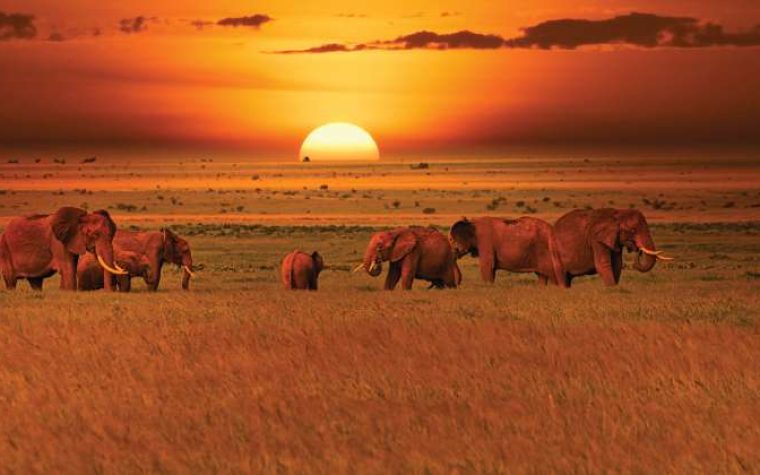
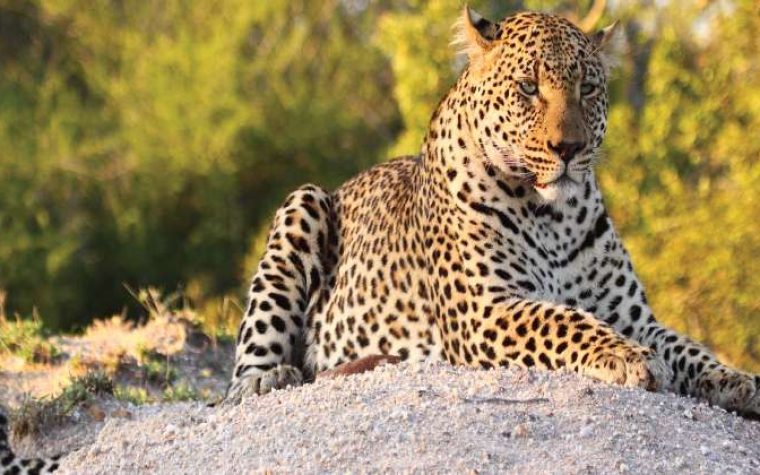
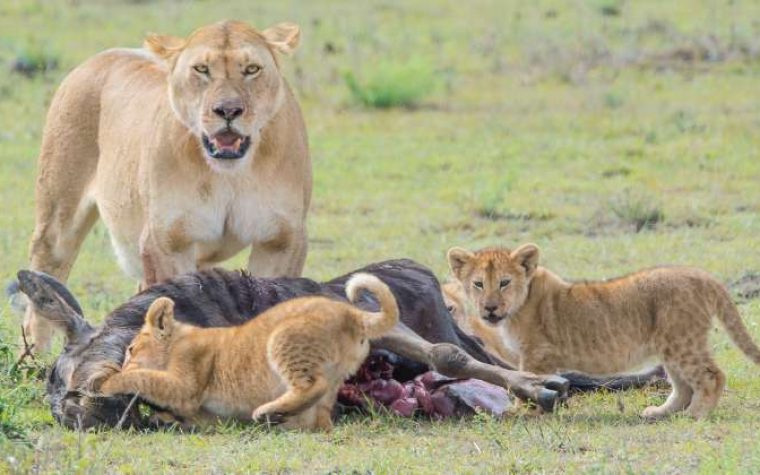
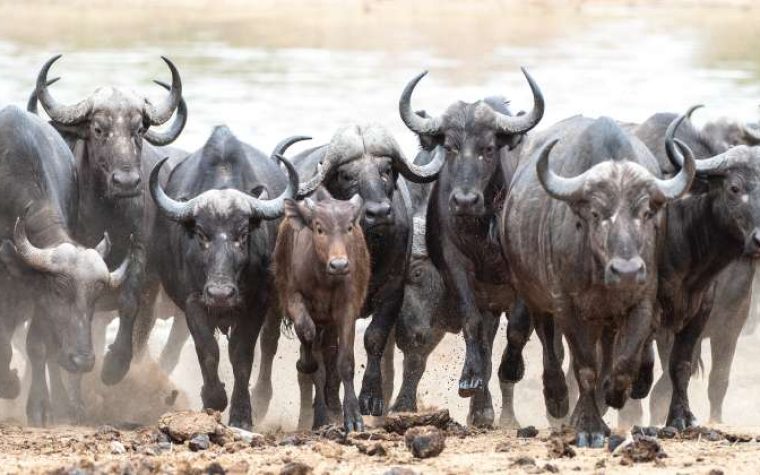
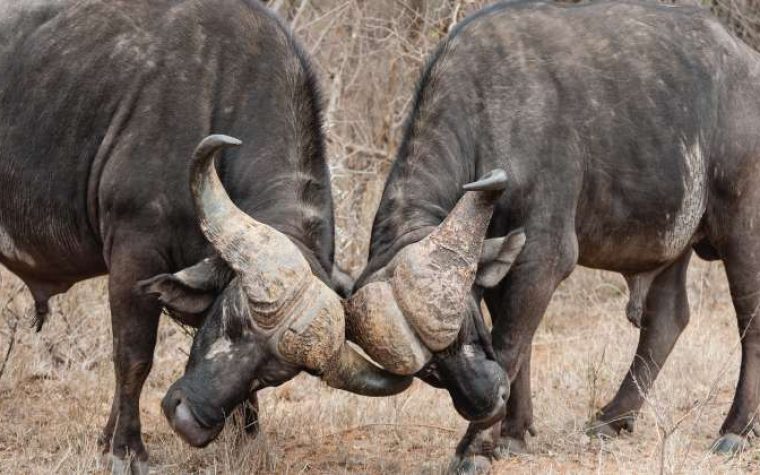
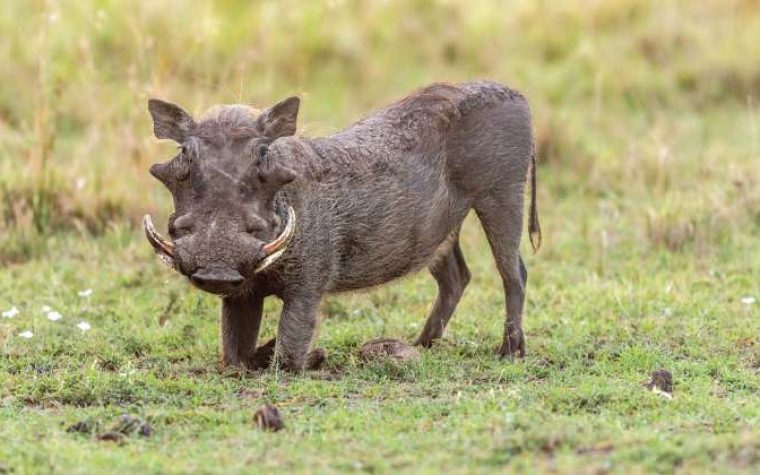
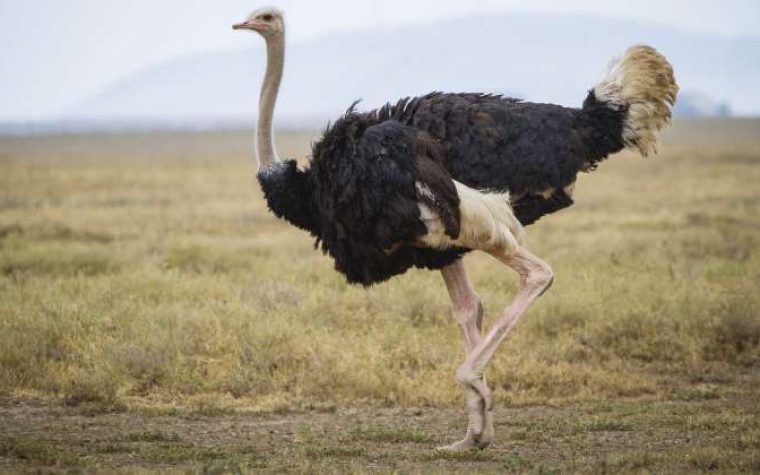
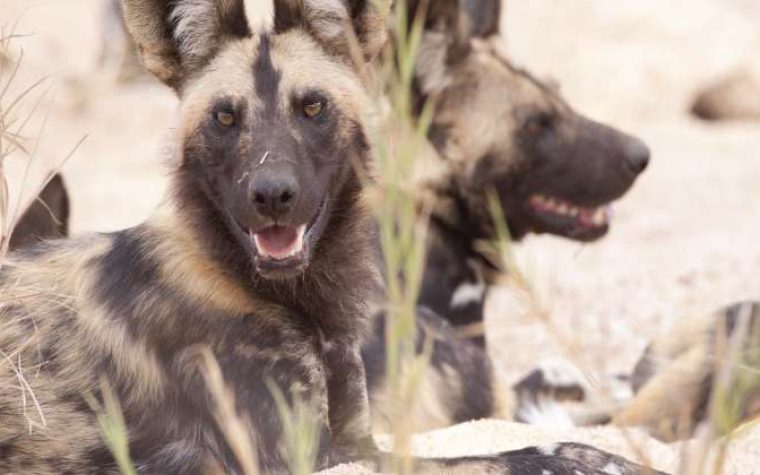
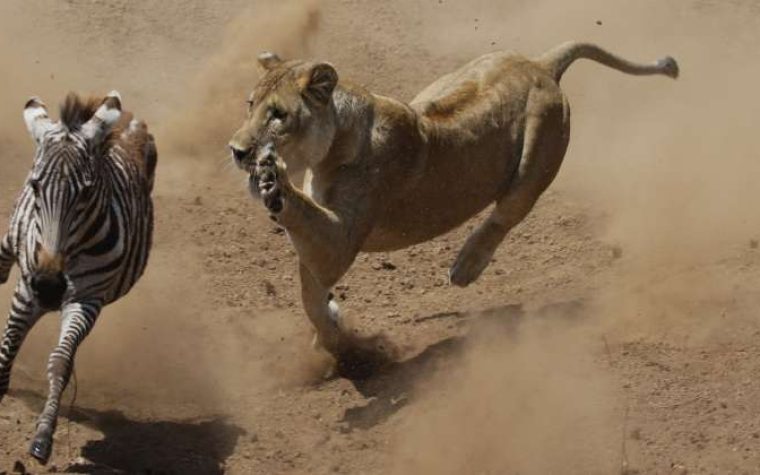
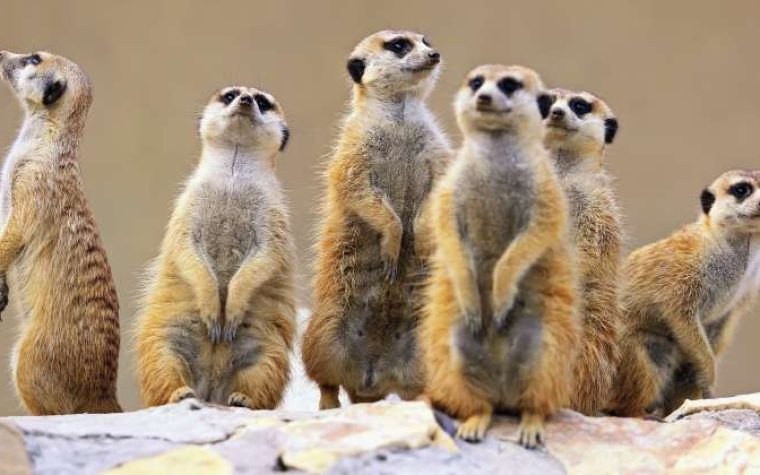
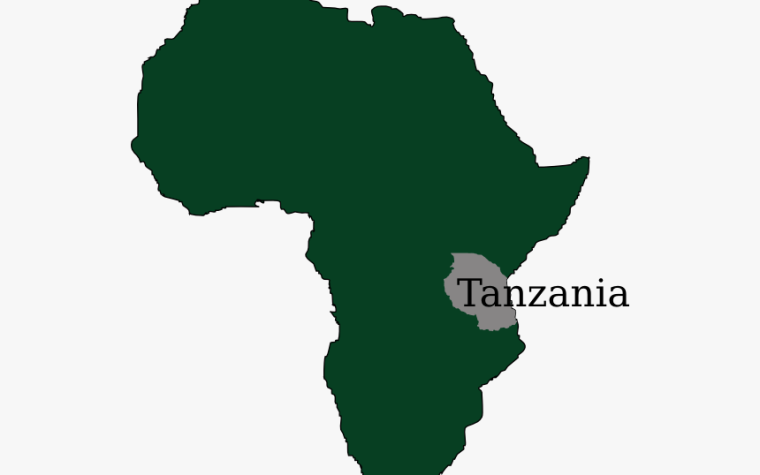
Best Time To Go
January to February and June to October (Different areas are best at different times)
High Season
July to March (The Seronera area is crowded)
Size
14,763km² / 5,700mi²
Altitude
1,140-2,099m / 3,740-6,886ft
Pros
-- Annual wildebeest migration (January to October)
-- Top wildlife viewing all year round
-- Endless plains feel like authentic Africa
-- Superb for spotting predators
-- Excellent mid-range and luxury lodges
-- Hot-air balloon safaris
Cons
-- The Seronera area is usually crowded
-- It gets very crowded at the Mara River crossings
-- The exact timing of the migration is unpredictable
The Wildebeest Migration
The annual great migration comprises more than 2 million wildebeest, zebra and gazelle traveling an 800km/500mi loop across the savannah of the Mara-Serengeti ecosystem. Most of the migration takes place in the Serengeti, which is far larger than Kenya’s Masai Mara National Reserve.
Wildlife
The Serengeti supports an incredible abundance and diversity of wildlife, from the Big Five (although black rhino is rarely seen) to giraffe, cheetah, spotted hyena, black-backed jackal, warthog and a huge variety of antelope. The Grumeti and Mara Rivers are home to grunting hippos and gigantic prehistoric-looking crocs, known for their feeding frenzy during the annual wildebeest river crossings.
Scenery
Serengeti’s immense landscape is simply stunning. This big-sky, untamed wilderness is renowned for its grassland plains punctuated with rocky outcrops (koppies) in the southeast. The Western Corridor follows the Grumeti and Mbalageti Rivers with associated riverine forests toward Lake Victoria, while the Lobo Hills area is characterized by big granite boulders reaching up in the sky. Farther north the Mara River sets the scene for the infamous river crossings, the ultimate highlight of the wildebeest migration.
Activities
Game drives in Serengeti are highly productive. Depending on your program, you can structure the day around two separate game drives (morning and afternoon) or go out for a full day with a picnic lunch. Budget permitting, you could mix it up with a hot-air balloon safari. Who doesn’t want to experience the Serengeti from the sky? After landing, you’ll be treated to a champagne breakfast in the bush. Night drives and guided walks are also offered at some camps and lodges.
Best Time To Visit
The Serengeti can be visited throughout the year. However, certain areas are better at certain times. January to February is the timing of the wildebeest calving in the Ndutu area. Around June and July is when the migration is in the Western Corridor, and August and September are the best months for catching the wildebeest crossing the Mara River. Wildlife viewing in the Lobo area peaks around August and September.
- Wildlife
-
Wildlife & Animals – Serengeti NP
Serengeti National Park offers what many consider the essence of an African safari. Massive animal herds march across the wide-open savannah as far as you can see, while predators never fail to add drama to this idyllic scene. You won’t need to drive far to spot lions. Cheetahs are common too. Imagine seeing the world’s fastest land animal in full sprint. Leopards are secretive, but you might find one lazing in one of the big trees along the Seronera River.
Wildlife Highlights
The Serengeti is famed for its annual wildebeest migration, when some 8 million hooves cross the open plains. More than 1,500,000 wildebeest, 200,000 zebra and 300,000 Thomson's gazelle join the trek for fresh grazing grounds. Predators follow the migration and sightings of big cats hunting is particularly exciting. Spotted hyena, golden jackal and black-backed jackal are never far off either.










Best Time for Wildlife Viewing
The Serengeti offers amazing wildlife viewing throughout the year. June and July are great months for seeing the migration and a possible crossing of the Grumeti River. The more famous river crossings of the Mara River can be witnessed around August and September in the north of the park. January to February is the best time for the wildebeest calving.
- Birds
-
Birds – Serengeti National Park
More than 500 bird species have been recorded in Serengeti National Park. The park is a significant part of the Serengeti-Mara ecosystem, which is one of Africa’s Endemic Bird Areas (EBAs) and hosts five bird species found nowhere else. Of these, grey-breasted spurfowl is common around Seronera, while Fischer’s lovebird and rufous-tailed weaver (a fascinating bird placed in its own genus) are conspicuous in woodland, but Usambiro barbet and grey-crested helmet-shrike are less easily seen. Migratory birds are present from November to April.
Notable Birds in Serengeti National Park
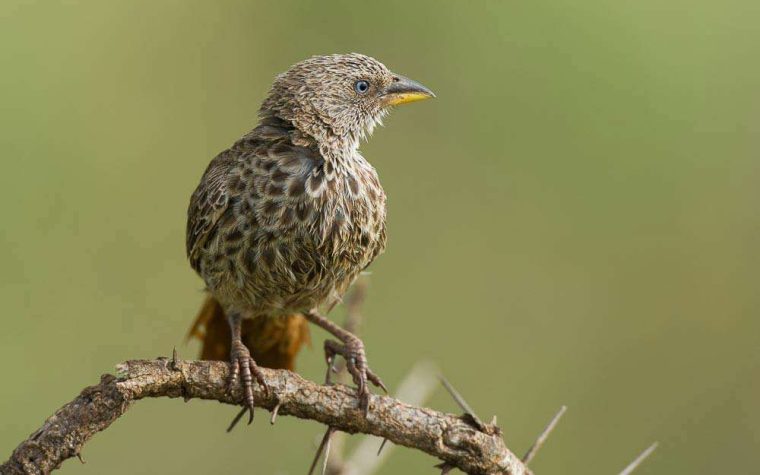
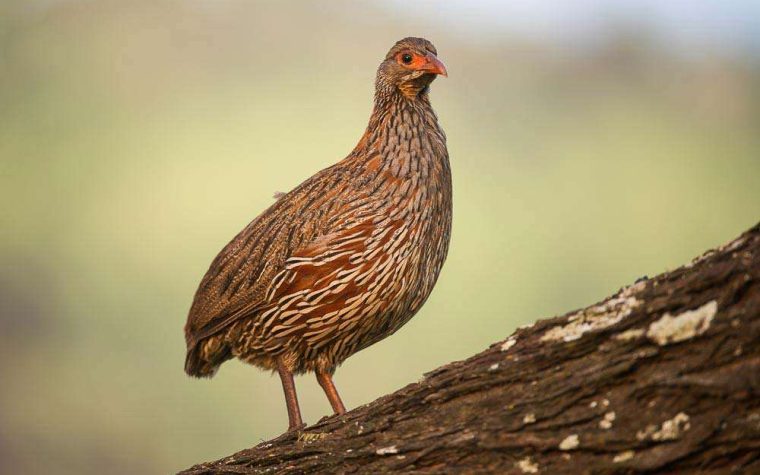
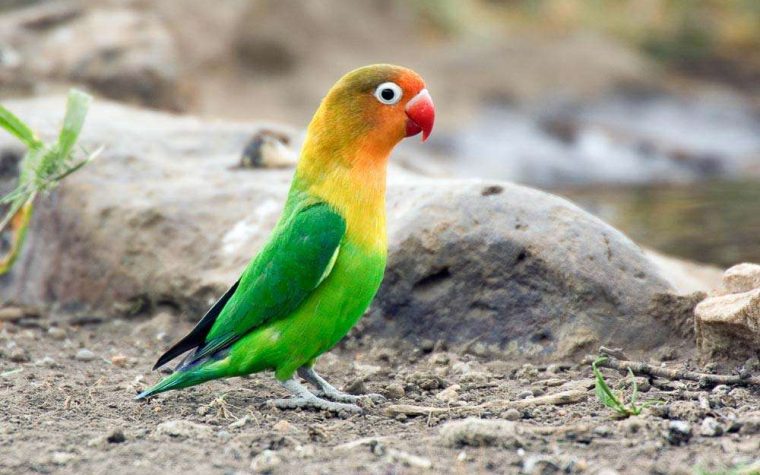
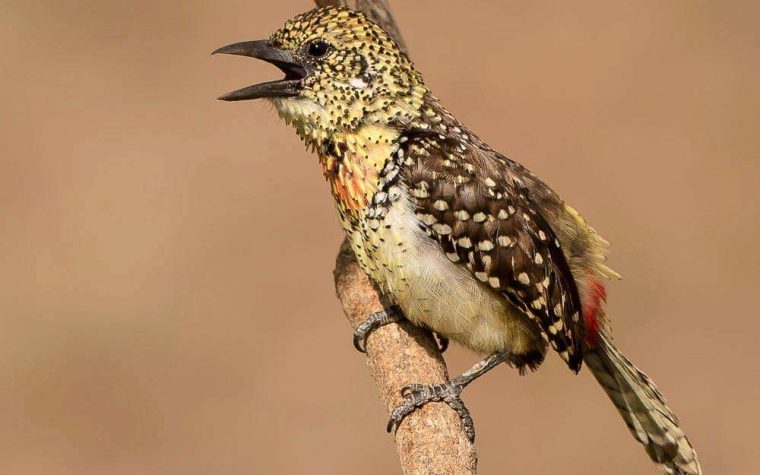
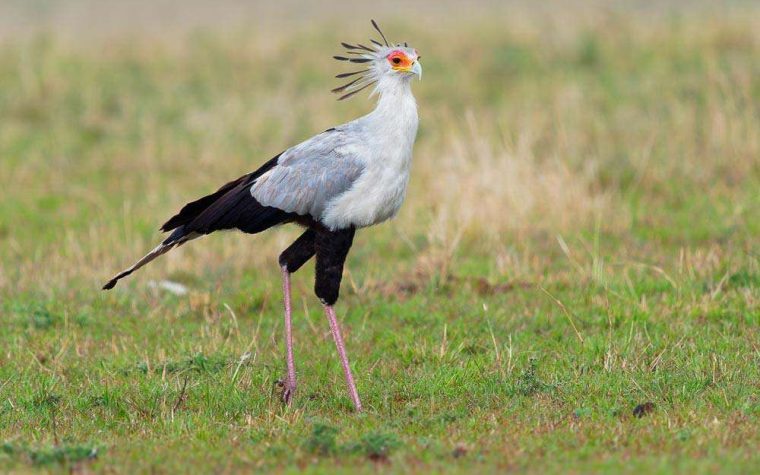
Birding Specials–Treats for Avid Birders
(E) endemic = only lives in Tanzania (NE) near-endemic = lives in Tanzania and neighboring countries
Best Time for Bird Watching
Bird watching in the Serengeti is good year-round but at its very best from November to April when Palearctic and intra-African migratory birds are present. This is also nesting time for resident species and some birds can be spotted in their breeding plumage. The best time for wildlife viewing is January to February and June to October, depending on the area in the park.
- Best Time To Visit
-
Best Time To Visit – Serengeti National Park
Wildlife viewing is good throughout the year in Serengeti National Park, but certain areas are better at specific times. Most people want to see the wildebeest migration and the predator action that goes with it. The good thing is that you can witness different stages of the migration in Serengeti from around January to October, so most of the year. The bad news is that the movement of the wildebeest depends on the rain and the exact timings are unpredictable.
Around January to February is a fantastic time to be in the Ndutu area for the wildebeest calving. June and July is the best time to be in the Western Corridor, and during August and September the migration is in the north where you might be able to see the famous Mara River crossings. Beware though that the crowds follow this calendar, so for an uncrowded experience you should stay away from the migration.- Excellent
- Good
- Fair
- Poor
- Best Time January to February and June to October (Different areas are best at different times)
- High Season July to March (It is high season at different times in different areas, but Seronera is usually crowded)
- Low Season April and May (Lower rates may apply)
- Best Weather June to October (Little to no rainfall)
- Worst Weather March and April (Peak of the Wet season)
Wildlife Photos in Serengeti National Park
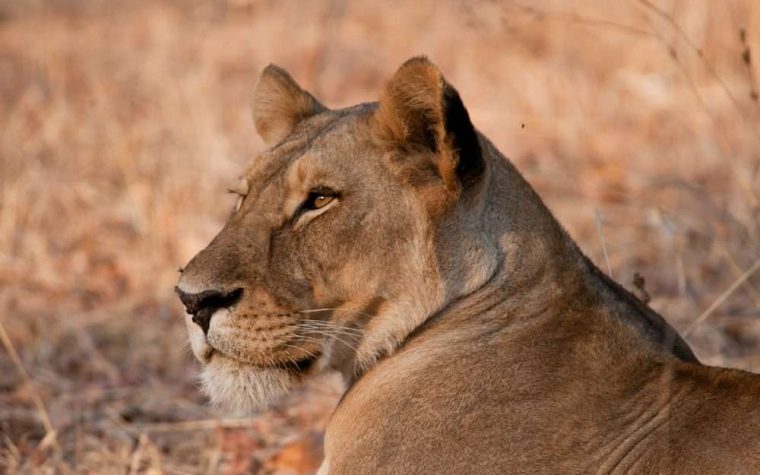
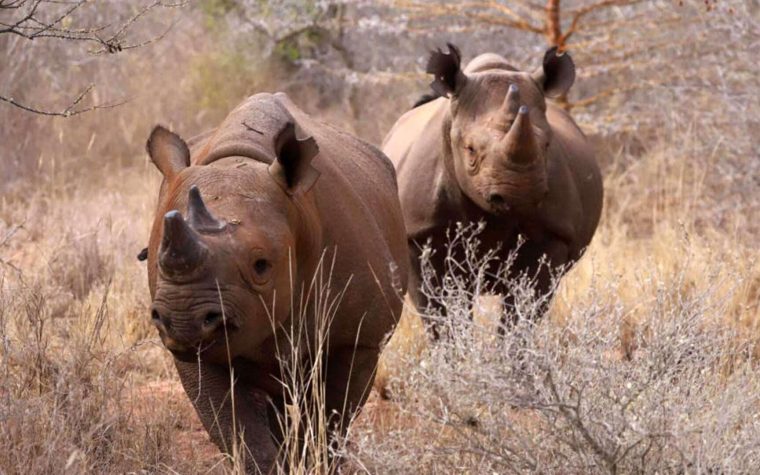
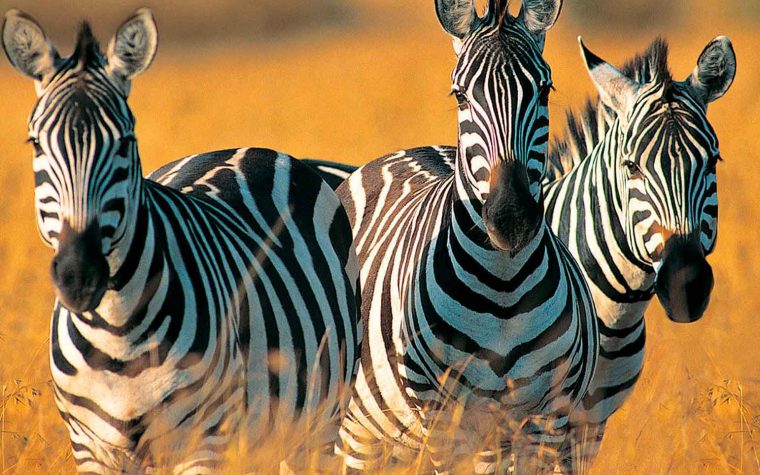
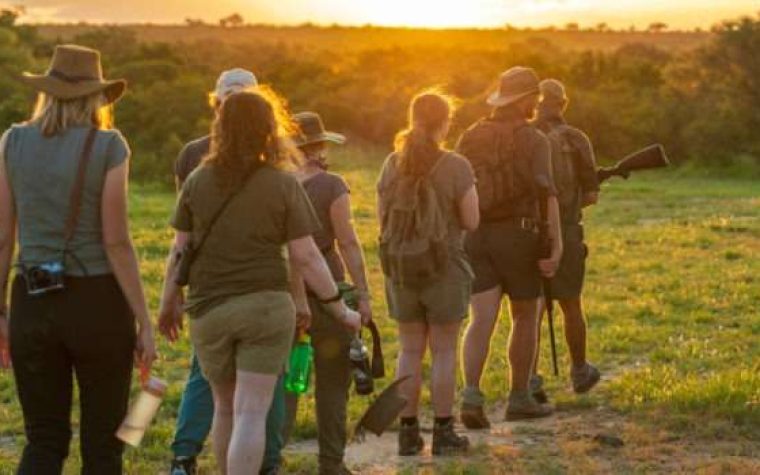
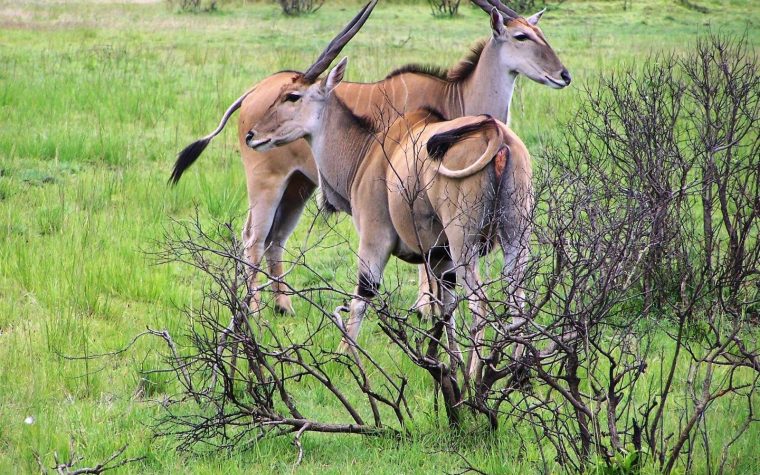
June to October – Dry Season
- Wildebeest migration is best seen in June and July in the Western Corridor and in August and September in the north of the park
- Animals are easier to spot since they gather around waterholes and rivers and the vegetation is less thick
- It is mostly sunny and there is very little rain
- There are few mosquitoes and the chance of contracting malaria is minimal
- The Seronera area gets crowded
- The Mara River area is busy when there are wildebeest river crossings (August and September)
- Mornings and nights get cold; warm clothing is recommended
November to May – Wet Season
- January to February is the time to see the wildebeest calving and is an excellent time to see predator action
- The scenery is lush
- April and May are low season, so it's usually less crowded and rates might be lower
- Although wildlife is easier to spot in the Dry season, the Serengeti offers good wildlife viewing throughout the year
- Migratory birds are present from November to April and bird watching is at its best
- Except for March and April, rains are mostly short afternoon storms and will seldom interfere with your trip
- March to April is the peak of the Wet season
- Weather & Climate
-
Weather & Climate – Serengeti National Park
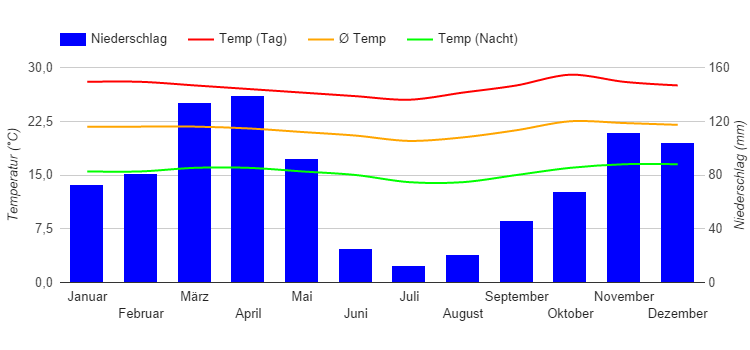
The climate in Serengeti National Park is usually moderate and pleasant. It never gets very hot, but it is consistently cool to cold at night and in the early mornings. Don’t forget to take warm clothing.
Serengeti’s Dry season is from June to October. The Wet season consists of two rainy periods: the short rains (November to December) and the long rains (March to May), with a dry spell in between. During the Wet season, it rarely rains all day, but afternoon thundershowers can be expected.
Wildlife Photos in Serengeti National Park





Dry Season – June to October
Afternoon temperatures are usually around 26°C/79°F. The sky is clear most days. It gets cold at night with minimum temperatures around 14°C/57°F.
- June, July, August & September – Occasional cold fronts are possible, with temperatures close to freezing. It's usually chilly early in the morning.
- October – The short rains might start at the end of October if they are early.
Wet Season – November to May
As in the Dry season, temperatures are moderate. Afternoon temperatures are usually around 27°C/81°F, and nighttime temperatures are around 15°C/59°F.
- November & December –– 'Short rains' – An unpredictable period of about a month of rains occurs sometime between November and December. The rains will be unlikely to interfere with your safari.
- January & February – There is usually a dry spell between the short and long rains. The exact timing is unpredictable.
- March, April & May – 'Long rains' – These are the wettest months. It tends to rain most days, although seldom for the whole day. It is often cloudy.
- Getting There
-
Getting There – Serengeti National Park
Most safaris to Serengeti National Park start from the town of Arusha. The best option to get there is to fly into Kilimanjaro International Airport (JRO), which is situated about 50km/31mi from Arusha. It is also possible to fly into Julius Nyerere International Airport (DAR) in Dar es Salaam and fly on to Arusha Airport (ARK) or Kilimanjaro International Airport (JRO).
There are regular flights from Arusha to several airstrips inside the park, but it is also possible to drive. The trip is about 325km/200mi and will take around 8 hours*. It is a bumpy ride, but it’s scenic and you’ll see wildlife along the way.
As the drive takes you through the Ngorongoro Conservation Area, a popular option is to fly one way, and drive the other way taking in an overnight stop to visit the Ngorongoro Crater. Coming from the crater, the distance to the Seronera area in the Serengeti is about 140km/90mi and the driving time is around 3 hours*.
*Driving times are only a rough indication. You should always consider the possibility of significant delays.
Wildlife Photos in Serengeti National Park





Airlines & Ticket Prices
Please check Skyscanner to see which airlines can take you to Kilimanjaro International Airport (JRO) or Julius Nyerere International Airport (DAR), and what tickets would cost.
Domestic Flights
Domestic and charter flights between parks are usually booked by tour operators as part of the tour package. Domestic flights to Serengeti can be booked with several local carriers:
Passport, Visa & Other Entry Requirements
Please check our Getting There – Tanzania page to learn more about passport, visa and other entry requirements.
- Malaria & Safety
-
Malaria & Safety – Serengeti National Park
Safety
A trip to Serengeti National Park is very safe in our opinion. Crime within Tanzania’s parks and reserves is rare, and your guide will help to keep you safe. Check the travel advisories for the most up-to-date information about traveling in the Serengeti and Tanzania (see ‘Staying Safe – Tanzania’ below).
- Staying Safe – Tanzania
- Governments’ Travel Advice for Tanzania
- General Travel Safety Precautions
- Cities & Urban Areas: Safety Precautions
Malaria & Vaccinations
As malaria is present in the Serengeti, you should take measures to protect yourself. Apply DEET-based mosquito repellent (these formulations are the most effective) and take antimalarial medication. It’s a good idea to cover up exposed skin in the evening too. Several vaccinations are also advisable when traveling to Tanzania. Seek advice from your local health-care professional.
- Malaria & Vaccinations – Tanzania
Wildlife Viewing
Wildlife viewing is generally very safe, especially on an organized safari. Always listen to the directions given by your guide. Take note of the rules of the park, and if you’re on a self-drive safari always stay in your vehicle unless you are in a designated area. For further tips, read the ‘Wildlife Viewing Safety Precautions’ below.
- Wildlife Viewing Safety Precautions
Overview – Serengeti National Park
The focus of most safaris in northern Tanzania, Serengeti National Park is renowned as the arena for the world’s greatest mammal migration. Even away from this iconic wildlife spectacle, the Serengeti’s sheer density of animals makes for incredible wildlife viewing throughout the year. The southern plains near Seronera are the most popular, but it’s also worth exploring the Western Corridor and Mara River regions.











Best Time To Go
January to February and June to October (Different areas are best at different times)
High Season
July to March (The Seronera area is crowded)
Size
14,763km² / 5,700mi²
Altitude
1,140-2,099m / 3,740-6,886ft
Pros
-- Annual wildebeest migration (January to October)
-- Top wildlife viewing all year round
-- Endless plains feel like authentic Africa
-- Superb for spotting predators
-- Excellent mid-range and luxury lodges
-- Hot-air balloon safaris
Cons
-- The Seronera area is usually crowded
-- It gets very crowded at the Mara River crossings
-- The exact timing of the migration is unpredictable
The Wildebeest Migration
The annual great migration comprises more than 2 million wildebeest, zebra and gazelle traveling an 800km/500mi loop across the savannah of the Mara-Serengeti ecosystem. Most of the migration takes place in the Serengeti, which is far larger than Kenya’s Masai Mara National Reserve.
Wildlife
The Serengeti supports an incredible abundance and diversity of wildlife, from the Big Five (although black rhino is rarely seen) to giraffe, cheetah, spotted hyena, black-backed jackal, warthog and a huge variety of antelope. The Grumeti and Mara Rivers are home to grunting hippos and gigantic prehistoric-looking crocs, known for their feeding frenzy during the annual wildebeest river crossings.
Scenery
Serengeti’s immense landscape is simply stunning. This big-sky, untamed wilderness is renowned for its grassland plains punctuated with rocky outcrops (koppies) in the southeast. The Western Corridor follows the Grumeti and Mbalageti Rivers with associated riverine forests toward Lake Victoria, while the Lobo Hills area is characterized by big granite boulders reaching up in the sky. Farther north the Mara River sets the scene for the infamous river crossings, the ultimate highlight of the wildebeest migration.
Activities
Game drives in Serengeti are highly productive. Depending on your program, you can structure the day around two separate game drives (morning and afternoon) or go out for a full day with a picnic lunch. Budget permitting, you could mix it up with a hot-air balloon safari. Who doesn’t want to experience the Serengeti from the sky? After landing, you’ll be treated to a champagne breakfast in the bush. Night drives and guided walks are also offered at some camps and lodges.
Best Time To Visit
The Serengeti can be visited throughout the year. However, certain areas are better at certain times. January to February is the timing of the wildebeest calving in the Ndutu area. Around June and July is when the migration is in the Western Corridor, and August and September are the best months for catching the wildebeest crossing the Mara River. Wildlife viewing in the Lobo area peaks around August and September.
Wildlife & Animals – Serengeti NP
Serengeti National Park offers what many consider the essence of an African safari. Massive animal herds march across the wide-open savannah as far as you can see, while predators never fail to add drama to this idyllic scene. You won’t need to drive far to spot lions. Cheetahs are common too. Imagine seeing the world’s fastest land animal in full sprint. Leopards are secretive, but you might find one lazing in one of the big trees along the Seronera River.
Wildlife Highlights
The Serengeti is famed for its annual wildebeest migration, when some 8 million hooves cross the open plains. More than 1,500,000 wildebeest, 200,000 zebra and 300,000 Thomson's gazelle join the trek for fresh grazing grounds. Predators follow the migration and sightings of big cats hunting is particularly exciting. Spotted hyena, golden jackal and black-backed jackal are never far off either.










Best Time for Wildlife Viewing
The Serengeti offers amazing wildlife viewing throughout the year. June and July are great months for seeing the migration and a possible crossing of the Grumeti River. The more famous river crossings of the Mara River can be witnessed around August and September in the north of the park. January to February is the best time for the wildebeest calving.
Birds – Serengeti National Park
More than 500 bird species have been recorded in Serengeti National Park. The park is a significant part of the Serengeti-Mara ecosystem, which is one of Africa’s Endemic Bird Areas (EBAs) and hosts five bird species found nowhere else. Of these, grey-breasted spurfowl is common around Seronera, while Fischer’s lovebird and rufous-tailed weaver (a fascinating bird placed in its own genus) are conspicuous in woodland, but Usambiro barbet and grey-crested helmet-shrike are less easily seen. Migratory birds are present from November to April.
Notable Birds in Serengeti National Park





Birding Specials–Treats for Avid Birders
(E) endemic = only lives in Tanzania (NE) near-endemic = lives in Tanzania and neighboring countries
Best Time for Bird Watching
Bird watching in the Serengeti is good year-round but at its very best from November to April when Palearctic and intra-African migratory birds are present. This is also nesting time for resident species and some birds can be spotted in their breeding plumage. The best time for wildlife viewing is January to February and June to October, depending on the area in the park.
Best Time To Visit – Serengeti National Park
Wildlife viewing is good throughout the year in Serengeti National Park, but certain areas are better at specific times. Most people want to see the wildebeest migration and the predator action that goes with it. The good thing is that you can witness different stages of the migration in Serengeti from around January to October, so most of the year. The bad news is that the movement of the wildebeest depends on the rain and the exact timings are unpredictable.
Around January to February is a fantastic time to be in the Ndutu area for the wildebeest calving. June and July is the best time to be in the Western Corridor, and during August and September the migration is in the north where you might be able to see the famous Mara River crossings. Beware though that the crowds follow this calendar, so for an uncrowded experience you should stay away from the migration.
- Excellent
- Good
- Fair
- Poor
- Best Time January to February and June to October (Different areas are best at different times)
- High Season July to March (It is high season at different times in different areas, but Seronera is usually crowded)
- Low Season April and May (Lower rates may apply)
- Best Weather June to October (Little to no rainfall)
- Worst Weather March and April (Peak of the Wet season)
Wildlife Photos in Serengeti National Park





June to October – Dry Season
- Wildebeest migration is best seen in June and July in the Western Corridor and in August and September in the north of the park
- Animals are easier to spot since they gather around waterholes and rivers and the vegetation is less thick
- It is mostly sunny and there is very little rain
- There are few mosquitoes and the chance of contracting malaria is minimal
- The Seronera area gets crowded
- The Mara River area is busy when there are wildebeest river crossings (August and September)
- Mornings and nights get cold; warm clothing is recommended
November to May – Wet Season
- January to February is the time to see the wildebeest calving and is an excellent time to see predator action
- The scenery is lush
- April and May are low season, so it's usually less crowded and rates might be lower
- Although wildlife is easier to spot in the Dry season, the Serengeti offers good wildlife viewing throughout the year
- Migratory birds are present from November to April and bird watching is at its best
- Except for March and April, rains are mostly short afternoon storms and will seldom interfere with your trip
- March to April is the peak of the Wet season
Weather & Climate – Serengeti National Park

The climate in Serengeti National Park is usually moderate and pleasant. It never gets very hot, but it is consistently cool to cold at night and in the early mornings. Don’t forget to take warm clothing.
Serengeti’s Dry season is from June to October. The Wet season consists of two rainy periods: the short rains (November to December) and the long rains (March to May), with a dry spell in between. During the Wet season, it rarely rains all day, but afternoon thundershowers can be expected.
Wildlife Photos in Serengeti National Park





Dry Season – June to October
Afternoon temperatures are usually around 26°C/79°F. The sky is clear most days. It gets cold at night with minimum temperatures around 14°C/57°F.
- June, July, August & September – Occasional cold fronts are possible, with temperatures close to freezing. It's usually chilly early in the morning.
- October – The short rains might start at the end of October if they are early.
Wet Season – November to May
As in the Dry season, temperatures are moderate. Afternoon temperatures are usually around 27°C/81°F, and nighttime temperatures are around 15°C/59°F.
- November & December –– 'Short rains' – An unpredictable period of about a month of rains occurs sometime between November and December. The rains will be unlikely to interfere with your safari.
- January & February – There is usually a dry spell between the short and long rains. The exact timing is unpredictable.
- March, April & May – 'Long rains' – These are the wettest months. It tends to rain most days, although seldom for the whole day. It is often cloudy.
Getting There – Serengeti National Park
Most safaris to Serengeti National Park start from the town of Arusha. The best option to get there is to fly into Kilimanjaro International Airport (JRO), which is situated about 50km/31mi from Arusha. It is also possible to fly into Julius Nyerere International Airport (DAR) in Dar es Salaam and fly on to Arusha Airport (ARK) or Kilimanjaro International Airport (JRO).
There are regular flights from Arusha to several airstrips inside the park, but it is also possible to drive. The trip is about 325km/200mi and will take around 8 hours*. It is a bumpy ride, but it’s scenic and you’ll see wildlife along the way.
As the drive takes you through the Ngorongoro Conservation Area, a popular option is to fly one way, and drive the other way taking in an overnight stop to visit the Ngorongoro Crater. Coming from the crater, the distance to the Seronera area in the Serengeti is about 140km/90mi and the driving time is around 3 hours*.
*Driving times are only a rough indication. You should always consider the possibility of significant delays.
Wildlife Photos in Serengeti National Park





Airlines & Ticket Prices
Please check Skyscanner to see which airlines can take you to Kilimanjaro International Airport (JRO) or Julius Nyerere International Airport (DAR), and what tickets would cost.
Domestic Flights
Domestic and charter flights between parks are usually booked by tour operators as part of the tour package. Domestic flights to Serengeti can be booked with several local carriers:
Passport, Visa & Other Entry Requirements
Please check our Getting There – Tanzania page to learn more about passport, visa and other entry requirements.
Malaria & Safety – Serengeti National Park
Safety
A trip to Serengeti National Park is very safe in our opinion. Crime within Tanzania’s parks and reserves is rare, and your guide will help to keep you safe. Check the travel advisories for the most up-to-date information about traveling in the Serengeti and Tanzania (see ‘Staying Safe – Tanzania’ below).
- Staying Safe – Tanzania
- Governments’ Travel Advice for Tanzania
- General Travel Safety Precautions
- Cities & Urban Areas: Safety Precautions
Malaria & Vaccinations
As malaria is present in the Serengeti, you should take measures to protect yourself. Apply DEET-based mosquito repellent (these formulations are the most effective) and take antimalarial medication. It’s a good idea to cover up exposed skin in the evening too. Several vaccinations are also advisable when traveling to Tanzania. Seek advice from your local health-care professional.
- Malaria & Vaccinations – Tanzania
Wildlife Viewing
Wildlife viewing is generally very safe, especially on an organized safari. Always listen to the directions given by your guide. Take note of the rules of the park, and if you’re on a self-drive safari always stay in your vehicle unless you are in a designated area. For further tips, read the ‘Wildlife Viewing Safety Precautions’ below.
- Wildlife Viewing Safety Precautions
Safari Tours to Serengeti National Park
4-Day Majestic Tarangire - Ngorongoro Crater - Serengeti
- 4D/3N
- Pax : 1
- $ 700
- From Arusha
2-Day Mountain Kilimanjaro and Tarangire Majestic Safari
- 2D/1N
- Pax : 1
- $ 745
- From Zanzibar
5-Day Tanzania Camping Safari to Serengeti National Park
- 5D/4N
- Pax : 1
- $ 890
- From Arusha
3-Day Group Tour to Serengeti & Ngorongoro
- 3D/2N
- Pax : 1
- $ 590
- From Arusha



